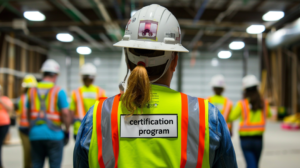Personal protective equipment, or ”PPE” is gear that is worn to reduce exposure to risks that can result in serious diseases and injuries at work. Contact with chemical, radioactive, physical, electrical, mechanical, or other occupational dangers may cause these illnesses and injuries. Examples of personal protection equipment are gloves, safety glasses, shoes, earplugs, muffs, hard hats, respirators, coveralls, vests, and complete body suits.
Personal Protective Equipment (PPE) is paramount in ensuring the safety and well-being of workers across various industries in the UK. This comprehensive guide provides an overview of PPE regulations, types of equipment, selection criteria, best practices, and emerging technological trends shaping the future of PPE in the UK.
Understanding PPE Regulations
In the UK, the use of PPE is regulated primarily by the Personal Protective Equipment Regulations 1992 (as amended). These regulations ensure that PPE provided to workers complies with essential health and safety requirements and meets appropriate European standards.
• These regulations outline the legal requirements for the use of PPE in the workplace.
• Employers are required to provide suitable PPE to employees who may be exposed to risks that cannot be adequately controlled by other means.
• PPE must be appropriate for the risks involved and the conditions present at the workplace.
• Employers are responsible for ensuring that PPE is properly maintained and stored and that employees are provided with training on its correct use.
• Employees have to use PPE correctly and report any defects or issues with their equipment.
What are the Types of PPE?
Personal Protective Equipment (PPE) encompasses various gear designed to protect individuals from workplace hazards. When selecting PPE, it’s essential to consider the hazards in the work environment and choose the appropriate type accordingly. Additionally, this equipment is inspected and maintained to ensure it remains effective and meets safety standards. Here are some common types of PPE:
1. Head Protection
Head protection is a vital aspect of Personal Protective Equipment (PPE), particularly in environments with a risk of head injury from falling objects, impact, or electrical hazards.
• Hard Hats: Protect against head injuries from falling objects or impact.
• Bump Caps: Suitable for environments with low overhead hazards.
2. Eye and Face Protection
Eye and face protection are key aspects of Personal Protective Equipment (PPE) to safeguard against various workplace hazards, including flying debris, chemical splashes, and harmful radiation.
• Safety Glasses: Shield eyes from impacts, chemical splashes, and UV radiation.
• Face Shields: Provide full-face protection against splashes, flying debris, and chemical hazards.
• Goggles: Offer enhanced protection for activities involving chemicals or airborne particles.
3. Respiratory Protection
Respiratory protection is vital in environments where workers may be exposed to airborne contaminants, such as dust, fumes, gases, vapours, or biological hazards. Proper respiratory protective equipment helps prevent inhalation of harmful substances and protects the respiratory system.
• Disposable Masks: Protect against dust, pollen, and other airborne particles.
• Half-face Respirators: Suitable for environments with moderate respiratory hazards.
• Full-face Respirators: Provide comprehensive protection against gases, vapours, and particulates.
4. Hand Protection
Hand protection is crucial in various industries to prevent injuries, chemical exposure, contamination, and other occupational hazards.
• Disposable Gloves: Prevent contamination and provide essential hand protection.
• Chemical-resistant Gloves: Shield against chemical exposure and corrosive substances.
• Cut-resistant Gloves: Protect against cuts, abrasions, and punctures.
5. Body Protection
Body protection PPE is essential for safeguarding workers from workplace hazards that may cause injury, contamination, or exposure to harmful substances.
• High-Visibility Clothing: Enhance visibility in low-light conditions or high-risk areas.
• Coveralls: Offer full-body protection against chemicals, contaminants, and biological hazards.
• Aprons and Smocks: Protect clothing from spills, splashes, and minor hazards.
6. Foot Protection
Foot protection PPE can be important for preventing injuries, slips, falls, and exposure to various workplace hazards that may cause foot-related injuries or discomfort.
• Safety Boots: Guard against impact, compression, and punctures.
• Wellington Boots: Waterproof footwear suitable for wet or muddy environments.
• Chemical-resistant Boots: Protect against corrosive substances and chemicals.
Importance of Selecting the right PPE
Selecting the right Personal Protective Equipment (PPE) is crucial for ensuring the safety and well-being of workers in various industries. Here are some key reasons highlighting the importance of selecting the right PPE:
• Protection Against Hazards: The primary purpose of PPE is to protect workers from workplace hazards such as physical, chemical, biological, or radiological hazards. Selecting the appropriate PPE ensures that workers are adequately protected from these dangers, minimising the risk of injuries, illnesses, or even fatalities.
• Compliance with Regulations: Regulatory bodies such as the Health and Safety Executive (HSE) in the UK mandate using PPE in specific workplaces where hazards cannot be eliminated or adequately controlled by other means. Selecting the right PPE ensures compliance with legal requirements, avoiding potential fines, penalties, or legal liabilities for employers.
• Risk Reduction: Properly selected PPE reduces the likelihood and severity of workplace injuries and illnesses. For example, wearing the correct type of gloves can prevent cuts, burns, or chemical exposures, while wearing appropriate eye protection can prevent eye injuries from flying debris or chemical splashes. This protects workers and reduces absenteeism, worker compensation claims, and associated costs for employers.
• Enhanced Worker Confidence: Providing workers with the right PPE boosts their confidence in their safety while performing tasks in hazardous environments. When workers feel adequately protected, they are more likely to focus on their work, increasing productivity and job satisfaction.
• Improved Comfort and Compliance: Selecting comfortable PPE increases the likelihood of compliance among workers. Uncomfortable or ill-fitting PPE may discourage workers from wearing it consistently, leaving them vulnerable to hazards. Choosing PPE with ergonomic designs and proper sizing enhances comfort and encourages regular use.
• Long-term Health Benefits: The right PPE selection can benefit workers by reducing their exposure to harmful substances or conditions. For example, respiratory protection can prevent long-term respiratory diseases caused by inhalation of dust, fumes, or other airborne contaminants.
• Effective Emergency Response: In emergencies such as fires, chemical spills, or medical emergencies, having the right PPE readily available ensures that workers can respond effectively and safely. This includes having appropriate protective clothing, respiratory protection, and other equipment to mitigate risks and protect responders.
Best Practices for PPE Usage
What can be done to ensure proper use of personal protective equipment?
Every piece of personal protective equipment should be designed and built safely, and it should be consistently and thoroughly maintained. It should be snug enough to promote worker use. An improper fit for personal protective equipment can mean the difference between being dangerously exposed and safely protected. Employers are required to supply personal protective equipment to their employees and oversee its appropriate usage in cases where engineering, work practices, and administrative controls are impractical or do not offer adequate protection.
• Training: Provide comprehensive training on the correct use, maintenance, and storage of PPE.
• Inspection: Regularly inspect PPE for signs of damage or wear and replace when necessary.
• Maintenance: Follow the manufacturer\\’s instructions for cleaning and maintenance of PPE.
• Storage: Store PPE in designated areas away from sunlight, moisture, and contaminants.
• Communication: Encourage open communication regarding PPE usage and concerns among workers.
What are the Responsibilities of the Employers?
1. Providing Suitable PPE:
Employers must assess the workplace for potential hazards and provide appropriate PPE to protect employees from those hazards. This includes ensuring that the PPE selected suits the specific tasks and environments in which employees work.
2. Training Employees:
They are responsible for providing comprehensive training on proper PPE use, fitting, maintenance, and storage. Employees should understand why PPE is necessary, how to wear it correctly, and how to recognize signs of damage or wear.
3. Ensuring Compliance with Regulations:
They must also ensure that all PPE meets relevant safety standards and regulatory requirements. This includes ensuring that PPE is properly maintained, inspected, and replaced as needed to maintain effectiveness.
Since the employers are responsible for providing suitable PPE, training and ensuring compliance with regulations, the employees, on the other hand, are obligated to wear PPE as instructed, report any defects or concerns, and participate in training programs.
Are there Technological Trends in Shaping the Future of PPE?
Yes, several technological trends are shaping Personal Protective Equipment’s (PPE) future. These advancements are aimed at enhancing safety, comfort, efficiency, and effectiveness in various work environments. This will be featured in the next article to come. Some notable technological trends include:
• Smart Sensors and IoT Integration
• Augmented Reality for Enhanced Vision
• Exoskeletons for Strength and Endurance
• Advanced Materials for Enhanced Protection
• Drone Technology for Site Surveillance
• Human-Machine Collaboration
Personal Protective Equipment is essential for safeguarding workers from occupational hazards in the UK. Employers and employees can create a safer working environment by understanding regulations, selecting appropriate equipment, and following best practices. Moreover, emerging technological trends are revolutionising PPE, promising enhanced protection, efficiency, and well-being for the workforce.
Remember, safety is everyone’s responsibility.
[Note: This guide provides general information and should not replace specific advice or regulations applicable to your industry or workplace. Always consult relevant authorities and experts for tailored guidance.





